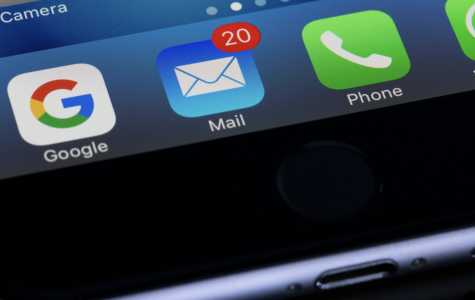Think twice before clicking "unsubscribe"—it might not do what you expect
By
Veronica E.
- Replies 0
If your email inbox feels more crowded every day, you’re not alone.
Promotions, spam, fake offers—they all pile up faster than you can delete them.
And when that tempting little word “unsubscribe” appears at the bottom of a cluttered email, it seems like an easy fix.
One click, and you’re done. Right?
Not so fast.
That innocent-looking link might not clean up your inbox at all.
In fact, clicking it could actually invite more trouble.
Let’s walk through what really happens when you click “unsubscribe” on suspicious emails—and safer ways to take back control.

Why that “unsubscribe” link might be a trap
For legitimate companies, unsubscribe links do exactly what they promise.
But scammers aren’t playing by the rules.
Cybersecurity experts warn that clicking unsubscribe in a shady or unexpected email can actually confirm that your address is active—and that someone is reading.
Here’s how the scam works:
A recent DNSFilter study found that 1 in every 644 unsubscribe links led to a dangerous website.
That might sound rare—but with how many emails flood in daily, the risk builds quickly.
Also read: Gmail’s game-changing move to tackle spam—say goodbye to junk mail!
So what should you do instead?
Good news: you don’t have to leave your inbox a mess.
Here are safer ways to clear out unwanted emails without putting yourself at risk:
1. Use your email provider’s unsubscribe feature
Services like Gmail, Outlook, and Yahoo offer their own unsubscribe tools—usually near the top of the message.
These are much safer than clicking links inside the email, since your provider handles the process securely.
2. Mark the email as spam or junk
If something looks suspicious, don’t even bother unsubscribing.
Just mark it as spam.
This trains your email system to filter future messages from the sender.
3. Block the sender
Tired of seeing emails from the same address over and over?
Most email platforms let you block them outright.
That way, you won’t have to see them again.
Also read: Block spam forever with this easy phone setting trick!
4. Create custom filters
It takes a few extra steps, but you can set up filters to automatically move certain messages to spam, trash, or a folder of your choice.
It’s especially helpful for recurring newsletters or promotions.
5. Use a secondary or “burner” email address
When signing up for online offers or shopping, use a separate email address.
Tools like Apple’s “Hide My Email” can generate random addresses that forward to your real inbox—so you can shut them off if they become a spam magnet.
6. Don’t share more than you have to
If an unsubscribe page asks for your name, password, or other personal info—close it immediately.
Real companies won’t ask for more than your email address just to remove you from a list.
Also read: New phishing scam tricks on the rise–you won’t believe what hackers do to get your information!
How to tell if an email is suspicious
Not all junk mail looks like junk. Keep an eye out for these warning signs:
When in doubt—don’t click anything. It’s better to be safe.
Why this matters for older adults
Scammers often target older individuals, assuming they’ll be more trusting or unfamiliar with digital tricks.
But staying sharp, informed, and cautious makes all the difference.
At The GrayVine, we believe knowledge—and community—are the best defense.
Read next: The FBI just revealed two words that signal you're being scammed—find out now!

`
Have you ever clicked an unsubscribe link and regretted it? Got tips for keeping your inbox clean? Or maybe you spotted a clever scam others should know about? Share your stories in the comments below—your insight could help someone else stay safe.
And remember: a clean inbox is great, but protecting your privacy is even better.
Promotions, spam, fake offers—they all pile up faster than you can delete them.
And when that tempting little word “unsubscribe” appears at the bottom of a cluttered email, it seems like an easy fix.
One click, and you’re done. Right?
Not so fast.
That innocent-looking link might not clean up your inbox at all.
In fact, clicking it could actually invite more trouble.
Let’s walk through what really happens when you click “unsubscribe” on suspicious emails—and safer ways to take back control.

Clicking “unsubscribe” may feel like a quick fix—but in some cases, it could lead to more spam or even scams. Image Source: Pexels / Torsten Dettlaff.
Why that “unsubscribe” link might be a trap
For legitimate companies, unsubscribe links do exactly what they promise.
But scammers aren’t playing by the rules.
Cybersecurity experts warn that clicking unsubscribe in a shady or unexpected email can actually confirm that your address is active—and that someone is reading.
Here’s how the scam works:
- It confirms you’re real. By clicking, you’re telling scammers your email is monitored. That’s a green light to send even more junk—or sell your address to others.
- It could redirect you. Some links don’t unsubscribe you at all. Instead, they take you to fake websites designed to steal your information or install malware.
- It opens the door to more. Engaging with scam emails, even just once, can make you a target for more sophisticated scams later.
A recent DNSFilter study found that 1 in every 644 unsubscribe links led to a dangerous website.
That might sound rare—but with how many emails flood in daily, the risk builds quickly.
Also read: Gmail’s game-changing move to tackle spam—say goodbye to junk mail!
So what should you do instead?
Good news: you don’t have to leave your inbox a mess.
Here are safer ways to clear out unwanted emails without putting yourself at risk:
1. Use your email provider’s unsubscribe feature
Services like Gmail, Outlook, and Yahoo offer their own unsubscribe tools—usually near the top of the message.
These are much safer than clicking links inside the email, since your provider handles the process securely.
- Gmail: Tap the “Unsubscribe” link next to the sender’s name.
- Outlook: Click the “Junk” dropdown and choose “Unsubscribe.”
- Yahoo: Use the “Unsubscribe” button in the message header.
2. Mark the email as spam or junk
If something looks suspicious, don’t even bother unsubscribing.
Just mark it as spam.
This trains your email system to filter future messages from the sender.
3. Block the sender
Tired of seeing emails from the same address over and over?
Most email platforms let you block them outright.
That way, you won’t have to see them again.
Also read: Block spam forever with this easy phone setting trick!
4. Create custom filters
It takes a few extra steps, but you can set up filters to automatically move certain messages to spam, trash, or a folder of your choice.
It’s especially helpful for recurring newsletters or promotions.
5. Use a secondary or “burner” email address
When signing up for online offers or shopping, use a separate email address.
Tools like Apple’s “Hide My Email” can generate random addresses that forward to your real inbox—so you can shut them off if they become a spam magnet.
6. Don’t share more than you have to
If an unsubscribe page asks for your name, password, or other personal info—close it immediately.
Real companies won’t ask for more than your email address just to remove you from a list.
Also read: New phishing scam tricks on the rise–you won’t believe what hackers do to get your information!
How to tell if an email is suspicious
Not all junk mail looks like junk. Keep an eye out for these warning signs:
- Strange or mismatched sender addresses
- Spelling errors or unusual formatting
- Urgent language like “Act now!” or “Your account will be closed!”
- A long, suspicious-looking unsubscribe link
- Requests for login credentials or personal data
When in doubt—don’t click anything. It’s better to be safe.
Why this matters for older adults
Scammers often target older individuals, assuming they’ll be more trusting or unfamiliar with digital tricks.
But staying sharp, informed, and cautious makes all the difference.
At The GrayVine, we believe knowledge—and community—are the best defense.
Read next: The FBI just revealed two words that signal you're being scammed—find out now!
Key Takeaways
- Clicking "unsubscribe" on suspicious emails can be risky, as some links may actually be scams that confirm your email as active to potential attackers.
- At least one in every 644 "unsubscribe" links DNSFilter analyzed led to a potentially malicious website, sometimes aiming to harvest your personal information or identify you as a target.
- It's safer to use the built-in unsubscribe feature provided by your email provider or to simply mark unwanted emails as spam and block the sender, rather than interacting with external links.
- Additional protective measures include setting up email filters, using a dedicated email for suspicious sites, or utilizing email masking services like Apple’s "Hide My Email".
Have you ever clicked an unsubscribe link and regretted it? Got tips for keeping your inbox clean? Or maybe you spotted a clever scam others should know about? Share your stories in the comments below—your insight could help someone else stay safe.
And remember: a clean inbox is great, but protecting your privacy is even better.






